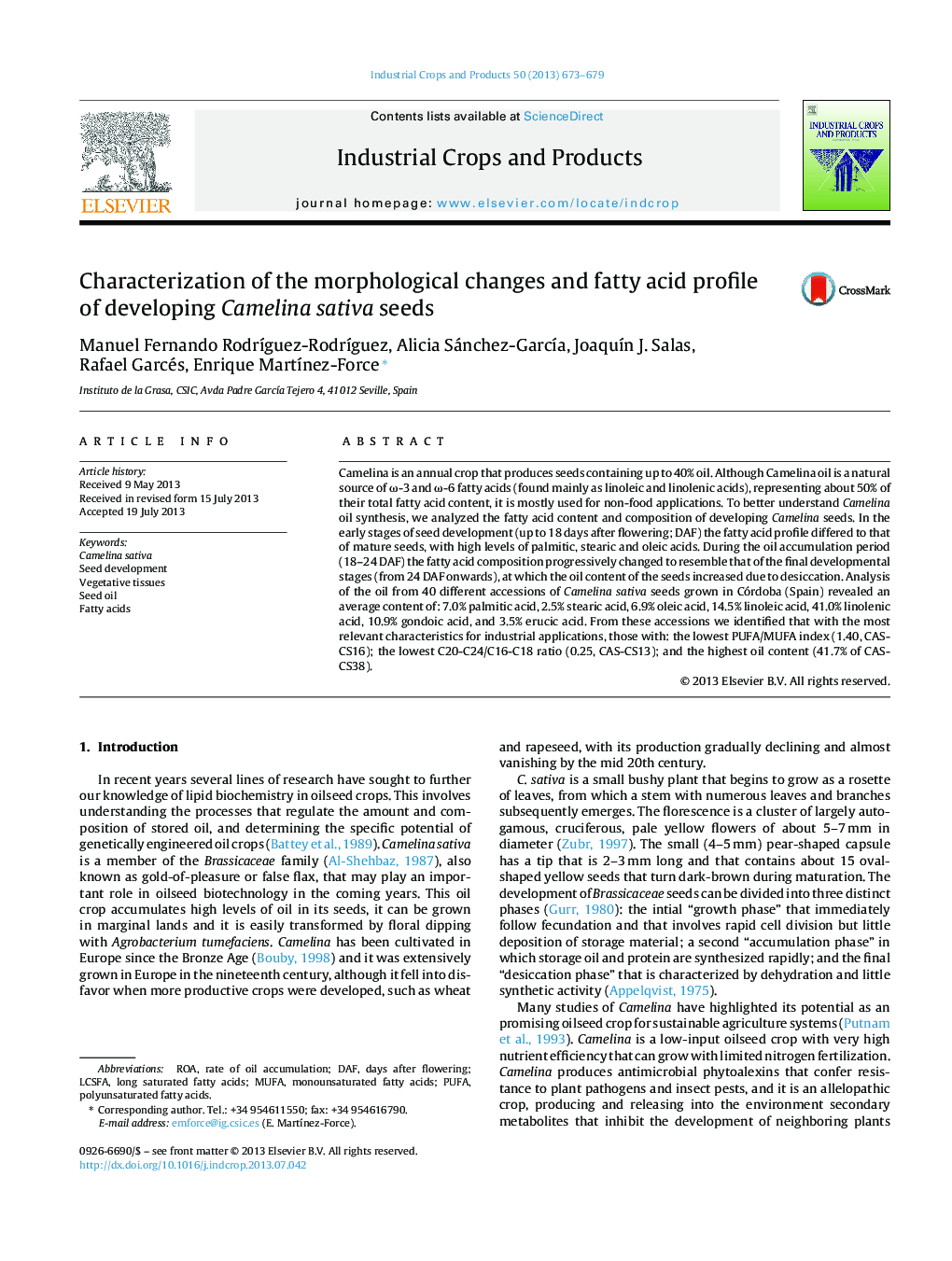| Article ID | Journal | Published Year | Pages | File Type |
|---|---|---|---|---|
| 6376856 | Industrial Crops and Products | 2013 | 7 Pages |
Abstract
Camelina is an annual crop that produces seeds containing up to 40% oil. Although Camelina oil is a natural source of Ï-3 and Ï-6 fatty acids (found mainly as linoleic and linolenic acids), representing about 50% of their total fatty acid content, it is mostly used for non-food applications. To better understand Camelina oil synthesis, we analyzed the fatty acid content and composition of developing Camelina seeds. In the early stages of seed development (up to 18 days after flowering; DAF) the fatty acid profile differed to that of mature seeds, with high levels of palmitic, stearic and oleic acids. During the oil accumulation period (18-24 DAF) the fatty acid composition progressively changed to resemble that of the final developmental stages (from 24 DAF onwards), at which the oil content of the seeds increased due to desiccation. Analysis of the oil from 40 different accessions of Camelina sativa seeds grown in Córdoba (Spain) revealed an average content of: 7.0% palmitic acid, 2.5% stearic acid, 6.9% oleic acid, 14.5% linoleic acid, 41.0% linolenic acid, 10.9% gondoic acid, and 3.5% erucic acid. From these accessions we identified that with the most relevant characteristics for industrial applications, those with: the lowest PUFA/MUFA index (1.40, CAS-CS16); the lowest C20-C24/C16-C18 ratio (0.25, CAS-CS13); and the highest oil content (41.7% of CAS-CS38).
Keywords
Related Topics
Life Sciences
Agricultural and Biological Sciences
Agronomy and Crop Science
Authors
Manuel Fernando RodrÃguez-RodrÃguez, Alicia Sánchez-GarcÃa, JoaquÃn J. Salas, Rafael Garcés, Enrique MartÃnez-Force,
